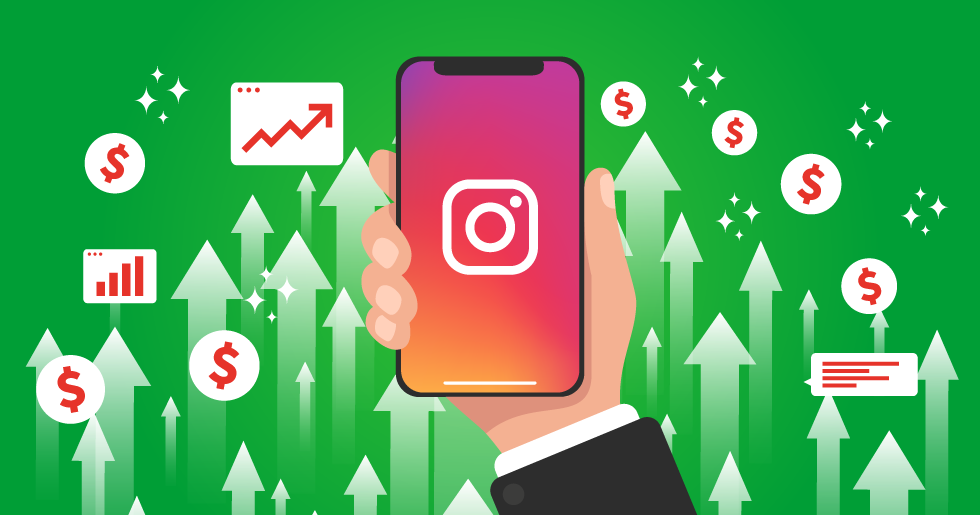
Why Instagram Matters for Business
Before diving into the how-to, it's important to understand why Instagram is essential for business growth:
-
Massive User Base: Over 60% of users discover new products on Instagram.
-
High Engagement Rates: Instagram posts have engagement rates up to 10x higher than Facebook.
-
Visual Appeal: Instagram is perfect for showcasing products and services visually.
-
Business Tools: Features like Instagram Shopping, Reels, Insights, and Ads help brands drive results.
Step 1: Set Up a Business Profile
To unlock Instagram’s full potential, switch to a Business Account. This gives you access to:
-
Instagram Insights (analytics)
-
Contact buttons (email, phone, directions)
-
Instagram Ads
-
Shopping features
Go to Settings > Account > Switch to Professional Account and select Business.
Tip: Fill out your bio with a clear description, a branded profile picture, and a call-to-action link (to your website or landing page).
Step 2: Optimize Your Instagram Bio
Your Instagram bio is like your business card—it should clearly communicate what you offer.
Key Elements of an Effective Bio:
-
Business Name & Niche: E.g., "Organic Skincare for Sensitive Skin"
-
USP (Unique Selling Proposition): What makes you different?
-
Call-to-Action (CTA): “Shop now,” “Book a free consult,” etc.
-
Link in Bio: Use tools like Linktree or Beacons to share multiple links.
Step 3: Create High-Quality, Branded Content
Instagram is a visual-first platform. Content is king—but quality is queen.
Types of Content to Post:
-
Photos & Carousels: Showcase your products, behind-the-scenes, team, or customer testimonials.
-
Reels: Short-form video is prioritized by Instagram's algorithm. Use trending audio and engaging visuals.
-
Stories: Great for real-time updates, polls, Q&A, or countdowns.
-
User-Generated Content (UGC): Share customer photos and testimonials to build trust.
-
Educational Content: Tips, how-tos, or industry insights.
Tip: Stick to a consistent color palette and tone to strengthen brand identity.
Step 4: Use Hashtags Strategically
Hashtags are essential for discoverability. A smart hashtag strategy can expand your reach significantly.
How to Use Hashtags:
-
Use a mix of branded, niche, and popular hashtags.
-
Avoid banned or spammy hashtags.
-
Create a branded hashtag (e.g., #GlowWithXYZ).
Recommended: Use 10–20 relevant hashtags per post and vary them for different types of content.
Step 5: Post Consistently and at the Right Time
Instagram’s algorithm favors active and consistent accounts.
Posting Best Practices:
-
Frequency: 3–5 times per week for posts, daily for Stories.
-
Timing: Post when your audience is most active (use Instagram Insights to find this).
-
Content Calendar: Plan your posts in advance using tools like Buffer, Later, or Planoly.
Step 6: Engage With Your Audience
Engagement drives growth. The more you interact, the more visible your content becomes.
Engagement Tips:
-
Reply to all comments and DMs.
-
Like and comment on followers’ posts.
-
Use Instagram Stories to run polls, Q&As, and quizzes.
-
Host giveaways or contests to increase visibility.
Step 7: Leverage Instagram Reels and Stories
Instagram is currently pushing Reels and interactive Stories more than regular posts.
Reels:
-
Keep them short, fun, and value-packed.
-
Use popular music, trends, and captions.
-
Include a CTA (e.g., “Follow for more tips”).
Stories:
-
Use stickers (polls, questions, quizzes) to boost engagement.
-
Share testimonials or behind-the-scenes clips.
-
Highlight Stories into categories like "Reviews," "Products," or "FAQs."
Step 8: Collaborate with Influencers and Micro-Creators
Influencer marketing is alive and thriving on Instagram.
Tips for Effective Collaborations:
-
Partner with micro-influencers (5K–50K followers) for better engagement and affordability.
-
Choose influencers who align with your brand values and target audience.
-
Use affiliate links or discount codes to track ROI.
Step 9: Run Targeted Instagram Ads
Once your organic strategy is working, amplify it with paid ads.
Ad Options:
-
Photo & Video Ads
-
Stories Ads
-
Carousel Ads
-
Reels Ads
-
Shopping Ads
Target your audience based on demographics, interests, behaviors, and lookalike audiences.
Bonus: Retarget website visitors or abandoned cart users with Instagram Ads through Facebook Business Manager.
Step 10: Analyze and Adapt
Regularly reviewing your performance helps refine your strategy.
Key Metrics to Track:
-
Follower growth
-
Engagement rate (likes, comments, shares)
-
Reach & impressions
-
Website clicks
-
Conversion rates
Use Instagram Insights and external tools like Hootsuite, Sprout Social, or Google Analytics.
Final Thoughts
Instagram isn’t just about likes or followers—it’s about building brand awareness, customer trust, and driving real business results. By implementing these strategies consistently and staying authentic to your brand, you'll be well on your way to growing your business through Instagram.

You must be logged in to post a comment.